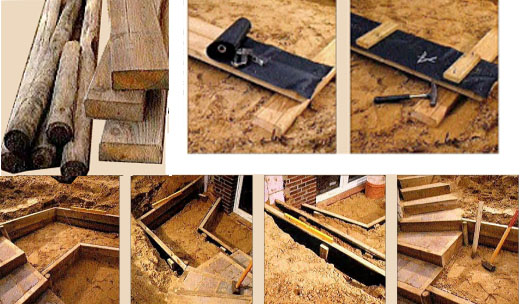 The terracing shown by us can – instead of planks and palisades – also perform with natural stone, for example with granite bosses or concrete embankment stones. The industry offers entire systems for fastening slopes, mostly shell-shaped concrete blocks, which are placed on top of one another in a modular manner. By interlocking with one another, they form a durable terrace wall.
The terracing shown by us can – instead of planks and palisades – also perform with natural stone, for example with granite bosses or concrete embankment stones. The industry offers entire systems for fastening slopes, mostly shell-shaped concrete blocks, which are placed on top of one another in a modular manner. By interlocking with one another, they form a durable terrace wall.
Walls suitable for planting are created with the so-called greenable embankment wall systems, those of the building materials trade
ready. This also includes the box-shaped concrete elements, which have cams on the front, so that those above cannot slip off. For these concrete parts, the subsurface must be stable and frost-resistant: Gravel sand is an option, Gravel or rock, otherwise concrete foundations.
Is the job done?, whether with components or in-house work, you have a completely different room.
Planks and palisades form the material to support the terrace steps. The palisades have a diameter of 6 cm, the planks have a cross-sectional area of 14 x 5,5 cm.
Two each serve to curb the terrace steps 14 cm wide pine planks. Nail or staple the film against moisture in the soil.
Both planks with bars made of board sections (9 x 3,2 cm thick) screw or nail. The foil should completely cover the back.
Only the lower step at the bottom of the pit needs one screed. The other steps consist of cut double planks.
Each step of the terrace can later have one 15 to 20 Take up a cm thick layer of topsoil or potting soil.
The spirit level is one of the most important utensils, because compliance with the straight line must be checked for each section of the plank.
The palisades have the task, to support the decking planks. One at each end point of the screed is generally sufficient.